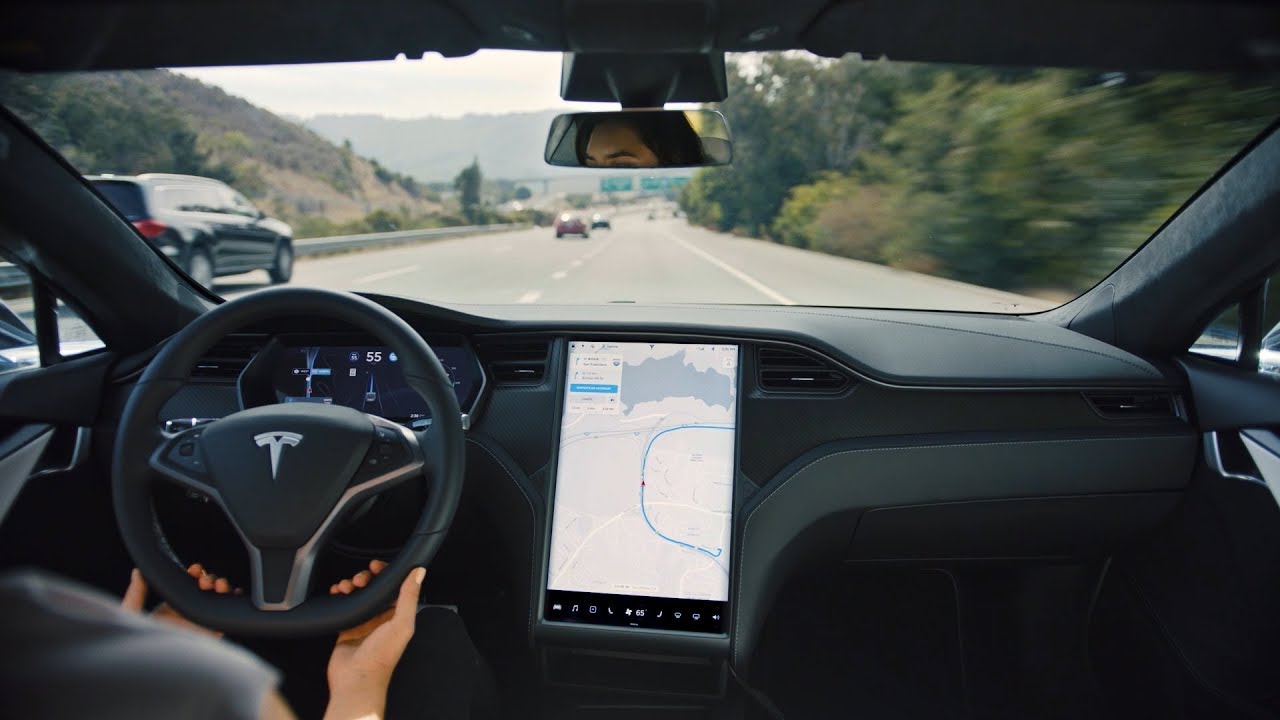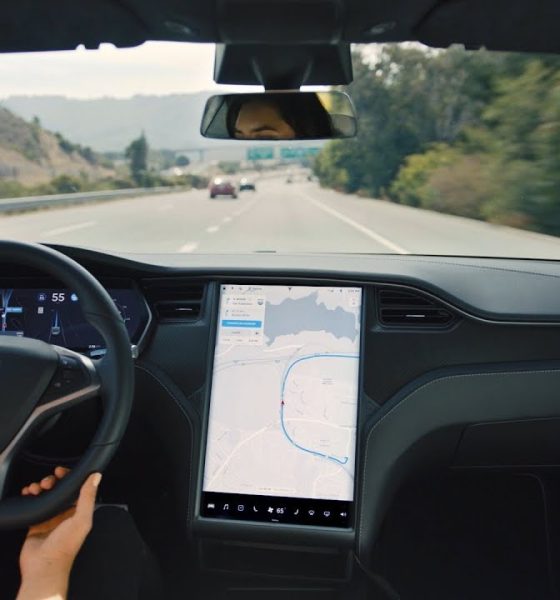

News
Tesla welcomes NHTSA’s critical eye on Autopilot, FSD: “We expect and embrace the scrutiny”
Tesla executives highlighted during the recently held Q3 2021 earnings call that the company welcomes scrutiny from agencies such as the National Highway Traffic Safety Administration (NHTSA). This was despite the incoming appointment of a new NHTSA senior safety adviser who previously dubbed Teslas as “killer robot(s)” on social media, and who sits at the board of Swedish LIDAR company Veoneer, a supplier of automakers like Ford and General Motors.
The NHTSA is currently probing Tesla over incidents where its cars ended up crashing into stationary emergency vehicles while Autopilot was engaged. The company has since rolled out some safety improvements for Autopilot, such as the ability to slow down and alert the driver when an emergency vehicle is detected. This, however, was met by a rather negative response from the NHTSA, which asked the EV maker why it did not issue a recall notice when it released Autopilot’s free over-the-air software update.
Considering the current atmosphere surrounding Tesla and the NHTSA, it was no surprise that investors inquired about the tense environment on the Q3 2021 earnings call. When asked how the company plans to deal with what appears to be increasing scrutiny from the safety agency, Tesla Vice President of Vehicle Engineering Lars Moravy was firm in the notion that the EV maker will be fully cooperative. He also noted that Tesla expects and welcomes scrutiny on its products like Autopilot and FSD.
“As we have been for years, we always engage with NHTSA and other worldwide regulatory bodies to share our knowledge and to work with them on our approaches on both active and passive safety. There are ongoing regulatory inquiries taking place all the time and especially on the subjects like FSD that are at the cutting edge of technology development.
“During these investigations, my team, myself are always cooperative as much as possible. We expect and embrace the scrutiny of these products and know that the truth about their performance and the innovations our products have will ultimately be all that matters. In the end and as I’ve said on previous calls, we take safety as a top priority in all our designs. This is because our primary motivation is from — coming from a team of incredible engineers designing software and hardware that saves lives and prevents injuries,” Moravy confirmed.
Tesla Chief Financial Officer Zachary Kirkhorn added that safety is paramount for the company. He noted that while the scrutiny will indeed be notable, Tesla is still excited to partner and work collaboratively with agencies like the NHTSA. This was because ultimately, making vehicles as safe as possible is the right thing to do.
“Safety is extremely important for Tesla. It’s the right thing to do. And, you know, if you look at various independent testing and regulatory testing of our products, you can see the work of incredibly talented engineers in the results of those tests. And, you know, our goal in developing safety-oriented software around the car is to continue to go beyond what the hardware is able to provide.
“If you can prevent a crash from happening, that’s the safest way to manage this. And I think at a macro level here, what we’re seeing — and this is entirely understandable and expected, is that the automotive industry is going through a transition from the traditional car as we know it to more of a computer, software-oriented, sensor suites around them that can manage things beyond just what the driver manages. And regulatory bodies are — understandably so, are interested in understanding how to regulate in this environment, and NHTSA is no exception to that.
“We’re excited to partner and we’ll work collaboratively with all regulatory bodies who want — to go on the journey to the transition to a software-oriented vehicle,” Kirkhorn concluded.
Don’t hesitate to contact us with news tips. Just send a message to tips@teslarati.com to give us a heads up.

Elon Musk
Elon Musk’s X will start using a Tesla-like software update strategy
The initiative seems designed to accelerate updates to the social media platform, while maintaining maximum transparency.

Elon Musk’s social media platform X will adopt a Tesla-esque approach to software updates for its algorithm.
The initiative seems designed to accelerate updates to the social media platform, while maintaining maximum transparency.
X’s updates to its updates
As per Musk in a post on X, the social media company will be making a new algorithm to determine what organic and advertising posts are recommended to users. These updates would then be repeated every four weeks.
“We will make the new 𝕏 algorithm, including all code used to determine what organic and advertising posts are recommended to users, open source in 7 days. This will be repeated every 4 weeks, with comprehensive developer notes, to help you understand what changed,” Musk wrote in his post.
The initiative somewhat mirrors Tesla’s over-the-air update model, where vehicle software is regularly refined and pushed to users with detailed release notes. This should allow users to better understand the details of X’s every update and foster a healthy feedback loop for the social media platform.
xAI and X
X, formerly Twitter, has been acquired by Elon Musk’s artificial intelligence startup, xAI last year. Since then, xAI has seen a rapid rise in valuation. Following the company’s the company’s upsized $20 billion Series E funding round, estimates now suggest that xAI is worth tens about $230 to $235 billion. That’s several times larger than Tesla when Elon Musk received his controversial 2018 CEO Performance Award.
As per xAI, the Series E funding round attracted a diverse group of investors, including Valor Equity Partners, Stepstone Group, Fidelity Management & Research Company, Qatar Investment Authority, MGX, and Baron Capital Group, among others. Strategic partners NVIDIA and Cisco Investments also continued support for building the world’s largest GPU clusters.
News
Tesla FSD Supervised wins MotorTrend’s Best Driver Assistance Award
The decision marks a notable reversal for the publication from prior years, with judges citing major real-world improvements that pushed Tesla’s latest FSD software ahead of every competing ADAS system.

Tesla’s Full Self-Driving (Supervised) system has been named the best driver-assistance technology on the market, earning top honors at the 2026 MotorTrend Best Tech Awards.
The decision marks a notable reversal for the publication from prior years, with judges citing major real-world improvements that pushed Tesla’s latest FSD software ahead of every competing ADAS system. And it wasn’t even close.
MotorTrend reverses course
MotorTrend awarded Tesla FSD (Supervised) its 2026 Best Tech Driver Assistance title after extensive testing of the latest v14 software. The publication acknowledged that it had previously criticized earlier versions of FSD for erratic behavior and near-miss incidents, ultimately favoring rivals such as GM’s Super Cruise in earlier evaluations.
According to MotorTrend, the newest iteration of FSD resolved many of those shortcomings. Testers said v14 showed far smoother behavior in complex urban scenarios, including unprotected left turns, traffic circles, emergency vehicles, and dense city streets. While the system still requires constant driver supervision, judges concluded that no other advanced driver-assistance system currently matches its breadth of capability.
Unlike rival systems that rely on combinations of cameras, radar, lidar, and mapped highways, Tesla’s FSD operates using a camera-only approach and is capable of driving on city streets, rural roads, and freeways. MotorTrend stated that pure utility, the ability to handle nearly all road types, ultimately separated FSD from competitors like Ford BlueCruise, GM Super Cruise, and BMW’s Highway Assistant.
High cost and high capability
MotorTrend also addressed FSD’s pricing, which remains significantly higher than rival systems. Tesla currently charges $8,000 for a one-time purchase or $99 per month for a subscription, compared with far lower upfront and subscription costs from other automakers. The publication noted that the premium is justified given FSD’s unmatched scope and continuous software evolution.
Safety remained a central focus of the evaluation. While testers reported collision-free operation over thousands of miles, they noted ongoing concerns around FSD’s configurable driving modes, including options that allow aggressive driving and speeds beyond posted limits. MotorTrend emphasized that, like all Level 2 systems, FSD still depends on a fully attentive human driver at all times.
Despite those caveats, the publication concluded that Tesla’s rapid software progress fundamentally reshaped the competitive landscape. For drivers seeking the most capable hands-on driver-assistance system available today, MotorTrend concluded Tesla FSD (Supervised) now stands alone at the top.
News
Elon Musk’s Grokipedia surges to 5.6M articles, almost 79% of English Wikipedia
The explosive growth marks a major milestone for the AI-powered online encyclopedia, which was launched by Elon Musk’s xAI just months ago.

Elon Musk’s Grokipedia has grown to an impressive 5,615,201 articles as of today, closing in on 79% of the English Wikipedia’s current total of 7,119,376 articles.
The explosive growth marks a major milestone for the AI-powered online encyclopedia, which was launched by Elon Musk’s xAI just months ago. Needless to say, it would only be a matter of time before Grokipedia exceeds English Wikipedia in sheer volume.
Grokipedia’s rapid growth
xAI’s vision for Grokipedia emphasizes neutrality, while Grok’s reasoning capabilities allow for fast drafting and fact-checking. When Elon Musk announced the initiative in late September 2025, he noted that Grokipedia would be an improvement to Wikipedia because it would be designed to avoid bias.
At the time, Musk noted that Grokipedia “is a necessary step towards the xAI goal of understanding the Universe.”
Grokipedia was launched in late October, and while xAI was careful to list it only as Version 0.1 at the time, the online encyclopedia immediately earned praise. Wikipedia co-founder Larry Sanger highlighted the project’s innovative approach, noting how it leverages AI to fill knowledge gaps and enable rapid updates. Netizens also observed how Grokipedia tends to present articles in a more objective manner compared to Wikipedia, which is edited by humans.
Elon Musk’s ambitious plans
With 5,615,201 total articles, Grokipedia has now grown to almost 79% of English Wikipedia’s article base. This is incredibly quick, though Grokipedia remains text-only for now. xAI, for its part, has now updated the online encyclopedia’s iteration to v0.2.
Elon Musk has shared bold ideas for Grokipedia, including sending a record of the entire knowledge base to space as part of xAI’s mission to preserve and expand human understanding. At some point, Musk stated that Grokipedia will be renamed to Encyclopedia Galactica, and it will be sent to the cosmos.
“When Grokipedia is good enough (long way to go), we will change the name to Encyclopedia Galactica. It will be an open source distillation of all knowledge, including audio, images and video. Join xAI to help build the sci-fi version of the Library of Alexandria!” Musk wrote, adding in a later post that “Copies will be etched in stone and sent to the Moon, Mars and beyond. This time, it will not be lost.”








